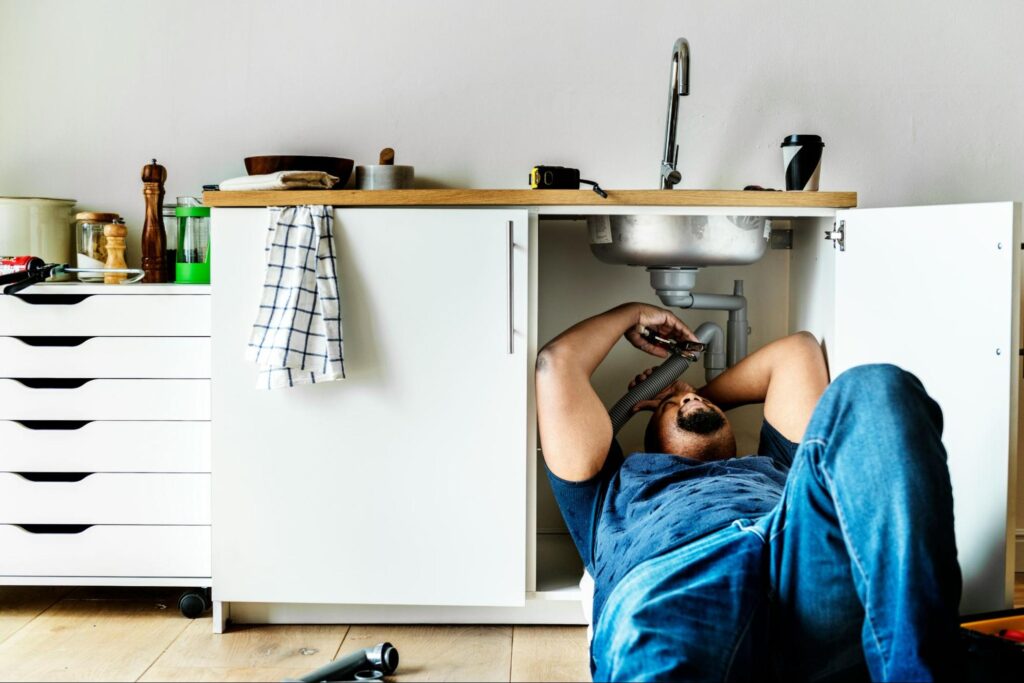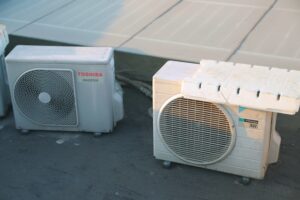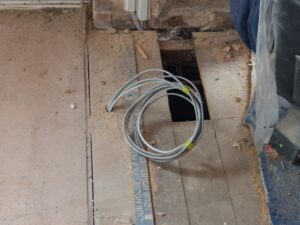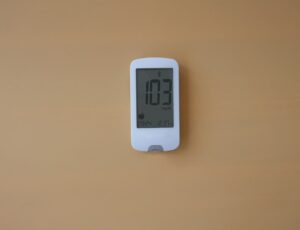Are you considering replacing your plumbing fixtures but worried about the hassle?
Replacing plumbing fixtures doesn’t have to be a headache. With the right approach, it can be a smooth and efficient process. Whether it’s a leaky faucet or an outdated showerhead, updating your fixtures can improve functionality and style.
When it comes to seamless plumbing fixture replacements, Excel Mechanical is your best choice. Our professional team specializes in HVAC and plumbing services for both residential and commercial needs. We focus on delivering exceptional quality and great value, ensuring that every system meets your requirements and budget.
Choosing the right service provider is key to a successful fixture replacement. We understand that each home and business has unique needs. Providing personalized solutions ensures that every project is handled with expertise and care.
Let us help you achieve the perfect upgrade for your space.
In this blog, you’ll learn:
- How seamless plumbing fixtures can enhance both function and style in your space
- The key steps involved in replacing plumbing fixtures with ease
- Tips for ensuring a smooth installation, including preparation, selection, and maintenance
Let’s get started!
Understanding Seamless Plumbing Fixtures
Seamless plumbing fixtures offer a modern approach to home and commercial plumbing systems, focusing on efficiency and aesthetics. They are designed for easy integration into existing spaces without disrupting the overall structure or design.
Definition and Benefits
Seamless plumbing fixtures are products that integrate smoothly with your existing plumbing systems.
They are often crafted to minimize visible connections or gaps, creating a smooth, uninterrupted appearance. Their primary advantage is their aesthetic appeal, which provides a sleek and modern look.
Moreover, these fixtures often enhance efficiency. They can help prevent leaks since there are fewer seams where water might escape. Maintenance is also more straightforward due to fewer parts. Choosing seamless plumbing fixtures can contribute to long-lasting plumbing systems, reducing the need for frequent repairs.
You get both style and performance, which can improve any space.
Types of Fixtures
Numerous fixture types are available in seamless designs, catering to various plumbing needs. Common examples include seamless sinks, faucets, and shower units. These fixtures are often used in modern bathroom and kitchen designs.
- Seamless sinks, for instance, can be installed under countertops or as integrated parts of the countertop, ensuring a clean look.
- Faucets with hidden attachments offer enhanced aesthetic value and easier cleaning.
- With showers, seamless glass panels and concealed piping contribute to a minimalist, functional setup.
It’s crucial to select fixtures that align with your space’s style and specific plumbing requirements.
Materials Used
The materials used for seamless plumbing fixtures are vital for durability and appearance.
Stainless steel, solid surface materials, and high-quality ceramics are commonly used. Each offers unique benefits and fits different design preferences.
- Stainless steel is valued for its durability and resistance to corrosion, making it ideal for kitchen or laundry fixtures.
- Solid surface materials, often made from resins and minerals, provide a smooth, uniform finish and are appreciated in modern bathrooms.
Look for materials that suit your design while providing easy maintenance and resistance to wear.
Preparation for Replacement
Replacing plumbing fixtures involves specific steps that ensure a smooth transition without error. Focus on understanding your current fixtures, select suitable replacements, and gather the necessary tools for the job.
Assessment of Existing Fixtures
Start by thoroughly checking your current plumbing fixtures.
Look for any cracks, leaks, or signs of aging. Note the fixture’s size and connection type, as these will influence your choices for new fixtures.
Use this information to determine if you need simple replacements or more comprehensive updates. Look around and list any problems or limitations you find.
Selection of New Fixtures
Choose items that fit your style and practical needs when picking new fixtures. Consider the fixture size, material, and finish.
Think about how it will look with your current setup. Prioritize quality and durability. Brands like Excel Mechanical provide options that balance appearance with functionality.
Our fixtures are not just stylish but also made to last, meeting both residential and commercial needs.
Tools and Materials Required
Gather all necessary tools before starting your project.
Essential items include a wrench, plumber’s tape, and a bucket for catching water. Additional materials like sealants or adapters might be needed depending on the fixture.
Create a checklist to ensure you have everything handy. This preparation avoids delays and provides a straightforward installation process.
Our experts recommend these essential tools to ensure your plumbing replacement is smooth and hassle-free.
Removal Procedures
Ensuring safe and effective fixture removal is crucial. Each step requires attention, from turning off the water to dismantling and handling waste. This ensures a smooth process without causing damage or loss.
Shutting Off Water Supply
Before removing any plumbing fixture, turn off the water supply.
Locate the main water valve or the specific shut-off for the fixture. Most shut-offs are found beneath sinks or behind toilets.
Turning the valve clockwise ensures the water flow stops. It’s important to check by turning on the faucet and ensuring the water does not run. This step prevents leaks and potential water damage.
After the water is off, open a nearby fixture to release any remaining pressure in the pipes. This avoids unpleasant surprises when disconnecting the fixture.
Dismantling Old Fixtures
Start by gathering the appropriate tools, such as wrenches and screwdrivers, to loosen and remove connections. Carefully disconnect the supply lines to prevent damage to pipes.
For sinks, loosen and remove nuts securing the sink to the countertop. Gently lift or slide the fixture out of place. Avoid damaging countertops or tiles by having an extra set of hands to help support the weight.
Exercise caution with heavy items like bathtubs, employing additional help if necessary. Care in this process helps maintain the integrity of surrounding surfaces and structures.
Handling Waste and Recycling
Dispose of old fixtures responsibly by examining parts for possible recycling.
Check with local recycling centers or waste facilities about accepted materials.
If fixtures are reusable, consider donating to organizations that accept second-hand building materials. This conserves resources and benefits the community.
When waste cannot be recycled or donated, ensure proper disposal based on local regulations. At Excel Mechanical, we prioritize environmental responsibility, ensuring ethical and sustainable practices in plumbing services.
Installation Techniques
When installing new plumbing fixtures, careful planning and precise execution are vital.
Each step requires attention, from positioning the fixtures to ensuring watertight seals to prevent leaks.
Setting New Fixtures
Begin by carefully positioning your new fixtures. Proper alignment is crucial for functionality.
- Securely mount the fixtures, following the manufacturer’s guidelines. Check that all brackets and supports are tight.
- Use a level to ensure everything is straight. Misaligned fixtures can lead to problems later.
- For larger installations, having a helper can make adjustments easier.
Our expertise ensures that every fixture fits perfectly for residential or commercial spaces. We adapt to any setting and offer personalized solutions.
Waterproofing and Sealing
Sealing is essential to prevent water damage.
- Apply plumber’s tape on threaded connections to avoid leaks. It’s a simple but effective method.
- Use a high-quality sealant around the edges and joints. This creates a waterproof barrier.
- Ensure seals are evenly applied to avoid gaps and potential leaks.
Testing for Leaks
After installation, leak testing validates your work.
- Turn on the water supply and inspect all connections for drips. Immediate fixes prevent future issues.
- Use paper towels to detect moisture at connections. They reveal leaks quickly.
- Observe the water pressure to ensure it’s consistent and within safe limits.
Finishing Touches and Detailing
Ensuring a polished look for plumbing fixture replacements involves careful attention to detail. Key elements like caulking, grout work, and aesthetic enhancements transform the space, while a final inspection ensures everything is in place.
Caulking and Grout Work
Proper caulking and grout work are essential to prevent leaks and enhance the fixture’s appearance. Ensure all seams and joints are sealed with waterproof caulk when replacing fixtures. This keeps moisture out and reduces the risk of mold.
Applying grout between tiles secures them and adds to the overall finish. Choose grout that matches the color scheme for a harmonious look. Clean excess grout and caulk immediately to maintain clean lines and a smooth finish.
This attention to detail is crucial for longevity and aesthetics.
Aesthetic Enhancements
Beyond functionality, aesthetic enhancements are key in creating a cohesive look. Choose fixtures and finishes that complement existing decor. Opt for consistent metal finishes such as chrome or brushed nickel for handles and faucets.
Details like matching towel bars or coordinating light fixtures can elevate the room’s appearance. Consider adding plants or decorative elements that align with your style. These intentional touches personalize the space, making it inviting and unique.
Final Inspection
Conduct a thorough final inspection to ensure everything functions correctly and looks as desired.
- Check all connections for leaks and ensure water flows smoothly.
- Inspect caulking and grout for any gaps or excess material that needs addressing.
- Make sure all fixtures are secure and aligned properly.
- Testing water pressure and temperature guarantees the system meets your needs.
This comprehensive attention to detail is crucial for successful plumbing projects, ensuring optimal functionality and aesthetics.
Maintenance and Care
Proper maintenance of your plumbing fixtures ensures they work efficiently and last longer. Regular cleaning and specific preservation strategies can help prevent damage and costly repairs.
Routine Cleaning Tips
Regular cleaning of plumbing fixtures can prevent buildup and stains.
Use a mild soap or vinegar to clean faucets, sinks, and showerheads. Apply the solution with a soft cloth or sponge, avoiding abrasive scrubbing pads that could scratch surfaces.
Weekly Task:
- Wipe down surfaces with a damp cloth and soapy water.
- Rinse thoroughly to remove residues.
- Dry with a clean towel to avoid water spots.
Maintaining a consistent cleaning schedule reduces the risk of mineral deposits and prolongs the life of your fixtures.
Long-Term Preservation Measures
Consider using water softeners to reduce scale buildup in hard water areas to preserve fixtures over time. Regular inspections can also catch leaks early, preventing water damage and inefficiencies.
Inspection Checklist:
- Check for leaks around joints and seals.
- Ensure drains are clog-free and allow water flow.
- Examine fixture surfaces for signs of rust or wear.
Focusing on excellent value and quality, our professionals help ensure your plumbing systems are always in top shape, efficiently meeting both residential and commercial demands.
Troubleshooting Common Issues
Replacing plumbing fixtures can seem simple, but sometimes things don’t go as planned. Here are some common problems and solutions.
- Leaky Fixtures: If you notice a leak after installation, check for loose fittings and gently tighten them with a wrench. If the leak persists, inspect the washers; they might need replacement.
- Low Water Pressure: Make sure the valves are fully open. If the pressure remains low, debris might be in the aerator. Unscrew it, clean it thoroughly, and reattach it.
- Incorrect Fitting: Ensure you’ve used the correct size connections if the fixture doesn’t align. Double-check all measurements and refer to the manufacturer’s instructions.
- Strange Noises: Gurgling or banging may indicate air in the pipes. Turn off the water supply and slowly reopen it to release trapped air.
- Draining Issues: If water drains slowly, check for clogs. Use a plunger or a plumbing snake for blockage removal. Avoid harsh chemicals as they may damage pipes.
If you encounter persistent issues or need expert advice, Excel Mechanical is your best choice. Our team ensures the best system for your needs and budget, making every replacement seamless.
Frequently Asked Questions
So, you’re thinking of upgrading your plumbing fixtures, but still have a few questions? You’re not alone! Replacing plumbing fixtures is a significant task, and it’s normal to want to make sure you’re making the right choices. Whether you’re tackling a simple faucet swap or a complete bathroom renovation, we’ve got you covered.
How can I identify when a plumbing fixture needs to be replaced?
Look for signs like leaks, rust, low water pressure, or persistent clogs. These can indicate that a fixture is old and not functioning well. Regular inspections can help you spot these issues early.
What factors should be considered when selecting replacement plumbing fixtures for a bathroom renovation?
Consider the style, functionality, and water efficiency of the fixture. Make sure it matches the decor and meets your water needs. Budget is also essential, so weigh the cost against the quality and durability of the fixture.
What steps are involved in replacing a kitchen faucet to ensure a seamless installation?
Turn off the water supply, then carefully remove the old faucet, making note of the connections. Follow the manufacturer’s instructions to install the new faucet, ensuring all nuts and washers are correctly tightened. Test for leaks by running water through the faucet.
How does one ensure compatibility between new plumbing fixtures and existing pipes?
Check the fixture’s size and connection types against your existing plumbing. You may need adapters or additional fittings if they don’t match. Consulting with an expert or referring to installation guides can help avoid mismatches.
Can DIY enthusiasts replace plumbing fixtures without professional help, and how?
Yes, DIY enthusiasts can replace fixtures by following guides and using basic tools. Knowledge about the specific fixture and plumbing system is crucial. Excel Mechanical offers expertise for complex projects, providing professional and reliable service tailored to your needs.




